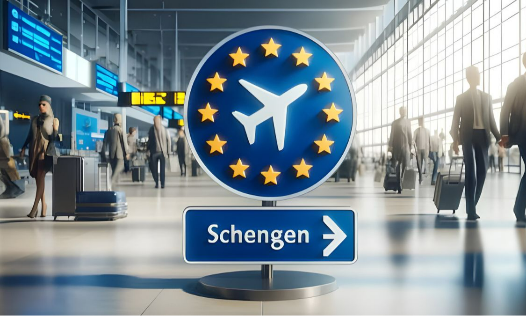Payment is being processed. Please do not refresh or close this page until your payment is complete.
 Book an Appointment
Book an Appointment

In 2025, ten Schengen countries have reinstated internal border checks, marking a significant shift in the European Union's border-free travel policy. This development, while legally permissible under Articles 25 and 29 of the Schengen Borders Code, reflects growing concerns over security, migration, and organized crime across the continent.
Countries Reinstituting Border Controls
The following countries have reintroduced border checks, each citing specific national concerns:
1. Germany 🇩🇪
o Reason: Irregular migration and smuggling networks.
o Status: Active since September 2024, extended to at least September 15, 2025.
o Affected Borders: Poland, Czechia, Austria, France, Switzerland, Denmark, Netherlands, Belgium, Luxembourg.
o Note: Travelers should carry valid ID and anticipate delays, especially at land crossings.
2. France 🇫🇷
o Reason: Ongoing terror threats and public event security.
o Status: November 1, 2024 – April 30, 2025 (expected renewal).
o Focus Areas: Borders with Belgium, Germany, Spain, and Italy; major train stations and airports.
o Note: Expect ID checks at borders and high-security areas like stadiums or protests.
3. Netherlands 🇳🇱
o Reason: High migration influx.
o Status: Active from December 9, 2024, to June 8, 2025.
o Focus Points: Airports, ferry terminals, and international rail hubs.
o Note: Even within Schengen, have documents ready for inspections when arriving by train or ferry.
4. Austria 🇦🇹
o Reason: Migration control along the Balkan route.
o Status: Border checks extended into 2025.
o Main Focus: Borders with Hungary, Slovenia, and Slovakia.
o Note: Be prepared for road checks and possible delays near border highways.
5. Italy 🇮🇹
o Reason: Security risks tied to irregular migration.
o Status: Introduced late 2024; continues into 2025.
o Targeted Areas: Border crossings with France, Austria, and Slovenia.
o Note: Bring ID when traveling between Italy and neighboring Schengen states; rail travelers may face spot checks.
6. Slovenia 🇸🇮
o Reason: Regional instability and migration.
o Status: Active since December 2024.
o Affected Borders: Croatia, Hungary, Italy, Austria.
o Note: Driving across borders? Carry a passport or ID and expect occasional document checks.
7. Denmark 🇩🇰
o Reason: National security and migration.
o Status: Controls active into late 2025.
o Key Focus: Øresund Bridge (to Sweden), ferries from Germany and Sweden.
o Note: Short train rides from Germany or Sweden may involve ID checks.
8. Sweden 🇸🇪
o Reason: Migration pressures and transnational crime.
o Status: Active throughout 2025.
o Key Areas: Ports in the south, airports, and land borders with Denmark and Norway.
o Note: Carry your ID on all cross-border trips, including public transport routes.
9. Norway 🇳🇴
o Reason: Irregular migration and coordinated Nordic response.
o Status: Border checks extended through 2025.
o Monitoring Areas: Ferry terminals, southern land routes, airports.
o Note: Travelers from Sweden and Denmark should expect ID checks on arrival.
10. Bulgaria 🇧🇬
o Reason: Controlled Schengen integration and national security.
o Status: Partial Schengen participation with selective internal controls.
o Primary Areas: Air and sea borders; land checks at discretion.
o Note: Check entry requirements if flying into or from Bulgaria within the Schengen zone.
Underlying Causes for the Reinstated Checks
The resurgence of border controls stems from a confluence of factors:
• Irregular Migration: A surge in unauthorized crossings has strained asylum systems, particularly in Germany and Austria.
• Security Threats: Heightened concerns over terrorism and organized crime have prompted countries like France and Sweden to bolster border security.
• Public Events: Major events, such as the Olympics, have necessitated increased security measures in host countries.
• Geopolitical Instability: Conflicts in regions like the Middle East and Ukraine have contributed to migration pressures and security concerns.
Implications for Travelers
While the Schengen Area continues to uphold the principle of free movement, travelers should anticipate:
• Document Checks: Carry valid identification, such as a passport or national ID card, even for intra-Schengen travel.
• Potential Delays: Allocate extra time for border crossings, especially when traveling by land.
• Stay Informed: Regularly check official government websites for the latest travel advisories and border control updates.